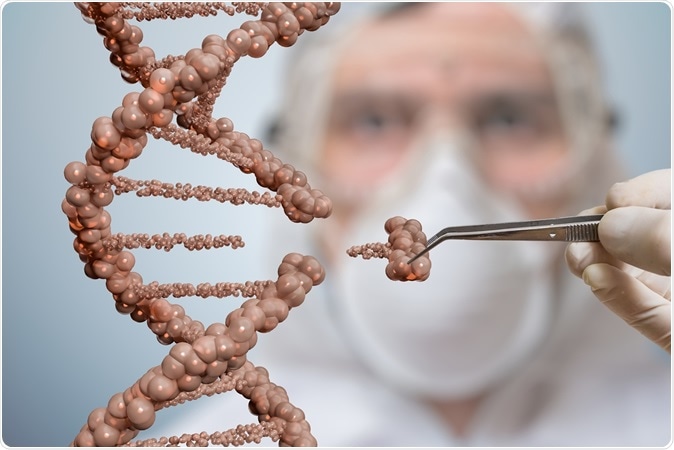Two different studies have shown that CRISPR - a gene editing tool, could be the next big thing in manipulating and modifying the DNA to suit the needs.

Image Credit: Vchal / Shutterstock
In one of the studies the team of scientists altered the atoms in DNA. This changed the genome of the individual. In the other study, the scientists successfully edited RNA. RNA is similar to the DNA and helps the genetic code in the DNA to be translated into proteins that can perform the various functions in the body.
These studies are hailed as paving stones to genetic modification that could be used to treat several genetic and inherited diseases that have been till date considered incurable.
The two studies come from the labs of Broad Institute of MIT and Harvard. The first study appeared in the journal Nature while the second study appeared in the journal Science.
Modifying DNA
In the first study, which appears in the latest issue of the journal Nature, the team of researchers has developed base editors. There are four bases in the DNA – A, T, G and C (Adenine, Thymine, Guanine and cytosine). A combination of these can code for the DNA. Changing even one of them can alter the genetic code. These base editors were used to successfully alter the chemical nature of one or more of these four bases to turn them into another base that can change the genetic code in the DNA. There is a condition that leads to accumulation of very high amounts of iron in blood. This is inherited genetically. For this first study, the team manipulated the genetic code so that the defective gene was changed.
Prof David Liu of the Broad Institute explained that the researchers were trying to bring in this base editing technology into human therapeutics. There are issues with implementation of the methods and also safety concerns that have not been addressed. Once the wrinkles are ironed out it could be a boon to mankind.
Modifying RNA
In the second study entitled, “RNA editing with CRISPR-Cas13”, that appeared in the journal Science, RNA was modified using the base editing technology CRISPR-Cas13. Here the base editing was used to alter the bases in the RNS to stop a genetic form of anemia in humans. They used a technique called “RNA Editing for Programmable A to I Replacement (REPAIR)” to achieve their ends.
According to Feng Zhang of the Broad Institute, genome editing has the main goal to correct mutations that can lead to genetic diseases. RNA editing is a nifty tool that can treat several diseases in any kind of cells Zhang explained.
Both the studies were conducted on human cells in the lab. Ethicists and other experts have praised the efforts and agreed that the fear of genetic modifications and its ethical concerns need to be put to rest for the benefit of mankind. Genetic editing, explain the experts, is becoming less risky and more effective and also can target the mutated genes more precisely.
References: